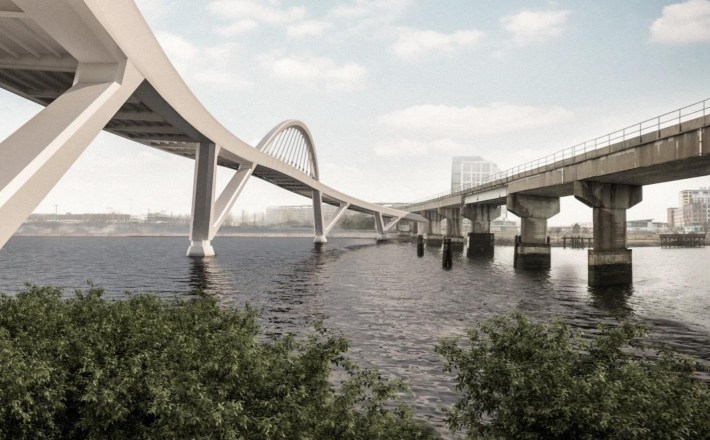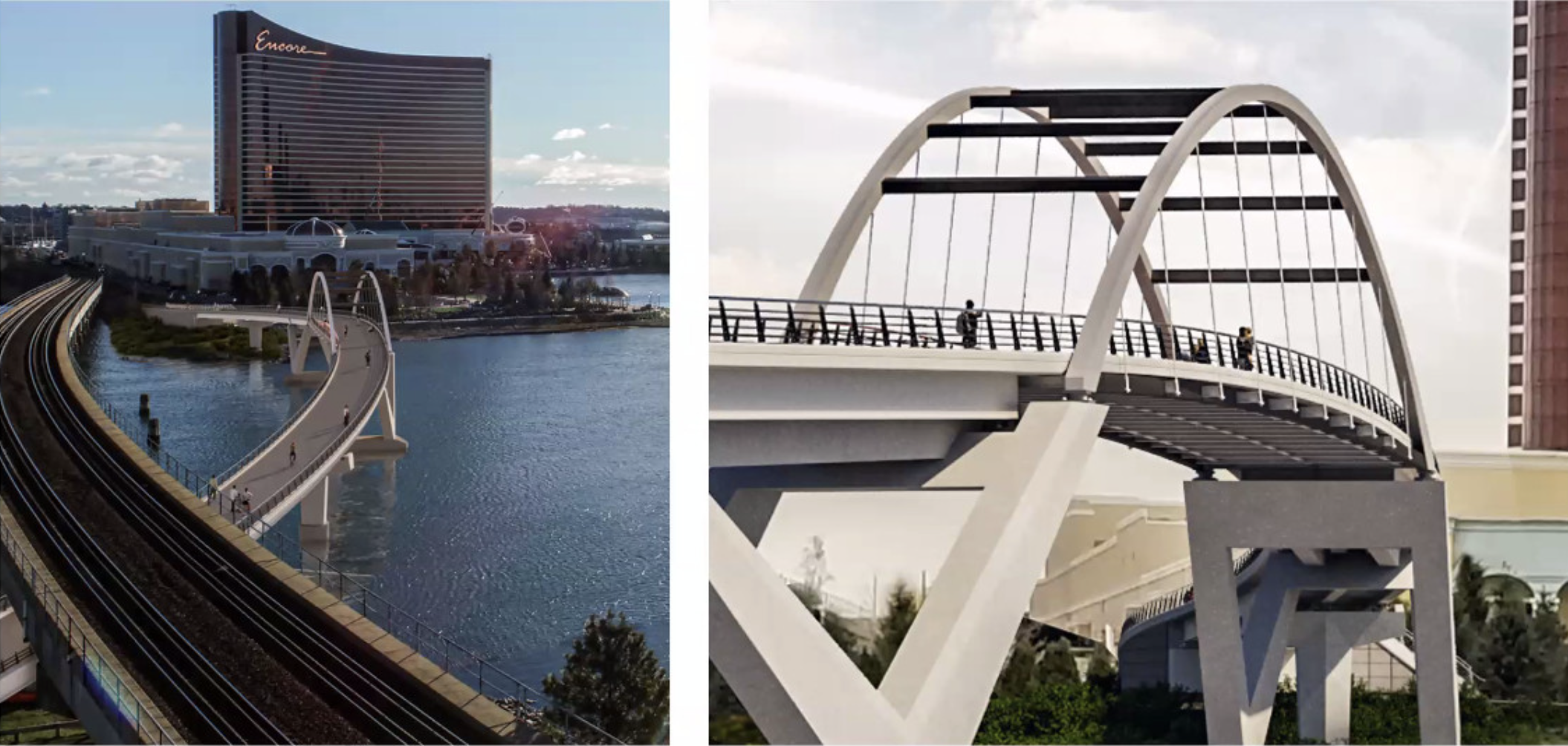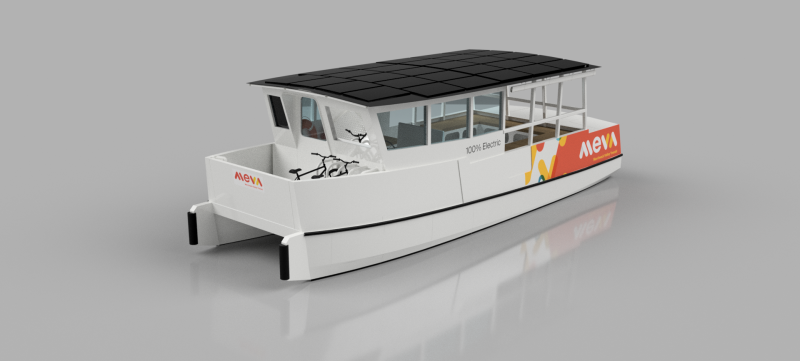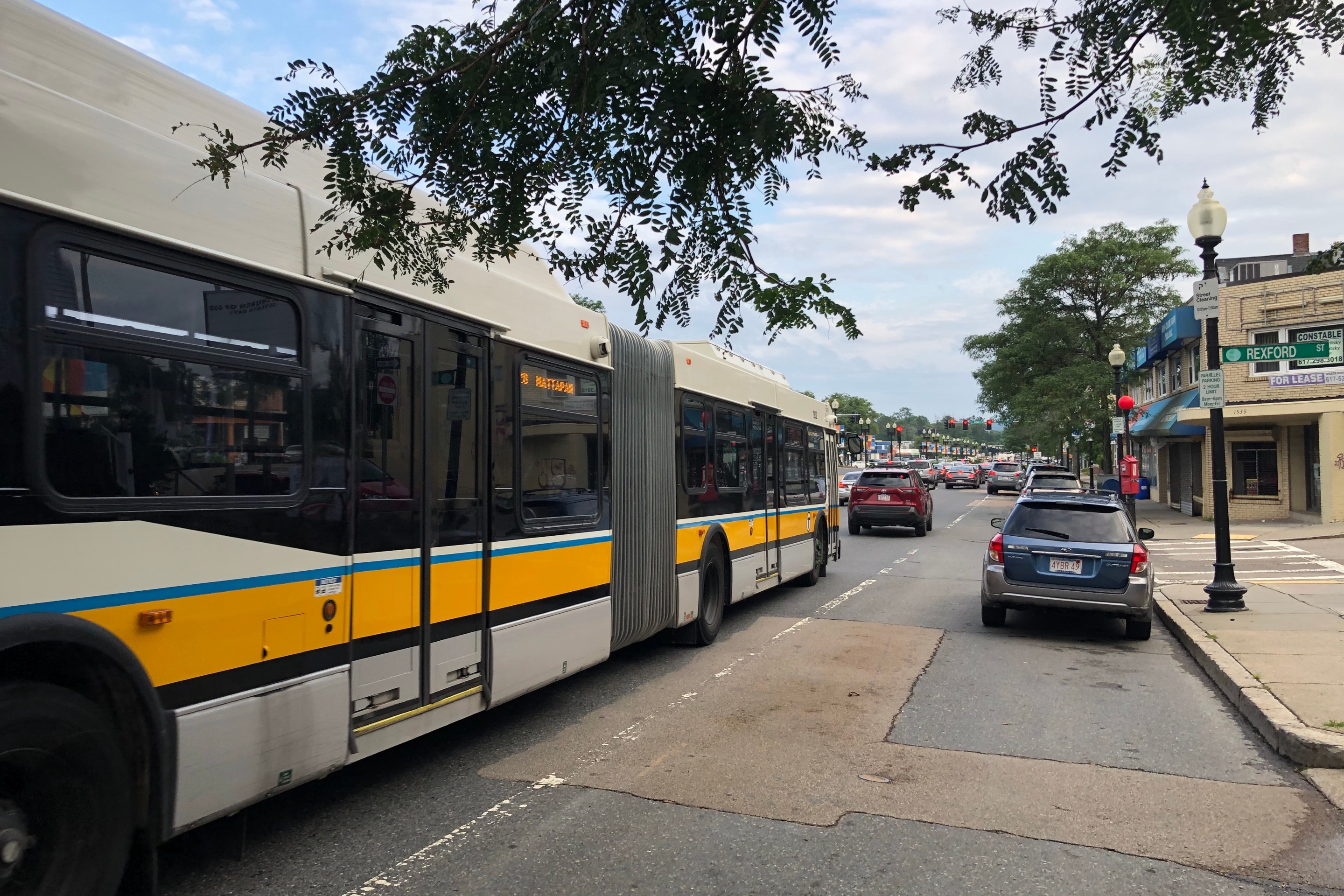At a virtual public hearing Tuesday evening, MassDOT officials shared new designs and a prospective timeline for building new car-free bridge over the Mystic River from Draw Seven Park in Somerville to the Encore Casino riverwalk in Everett.
The proposed bridge would essentially extend the Northern Strand Trail over the Mystic River to connect to the Assembly district and existing riverfront path systems in Somerville and Boston:

The state's Department of Conservation and Recreation (DCR) had previously been managing the project, but that agency had been struggling to get it through the planning stages.
Even Tuesday's informational meeting faced several delays: it had been originally scheduled for May, then re-scheduled as an in-person June 24th hearing at Somerville High School, then, hours before the meeting began, MassDOT announced that the event would be held virtually instead, so that attendees could avoid going out in today's extreme heat.
New designs feature much wider bridge deck
When DCR began designing the project in 2018, the design called for building a 12-foot-wide bridge deck – wide enough for two people on bikes to pass each other – but advocates worried that the path would be too narrow for the bridge's anticipated foot and bike traffic.
In the six years since then, a boom in real estate development proposals for the Everett side of the river have considerably increased traffic forecasts for the proposed bridge.
When MassDOT took over the project from DCR earlier this year, agency officials pledged that they would pursue a design with a wider, 18-foot deck.

The new design would be wide enough for three or four people to pass each other comfortably side-by-side, and is more in line with recommendations from NACTO, North America's standards-setting body for transportation engineering.
There are some more subtle visual differences in MassDOT's updated design, too. The previous design (pictured below) would have perched the bridge on a series of v-shaped piers, with a central span suspended from cables under a single arch in the middle of the river (see below).

The new design uses more traditional T-shaped piers closer to the riverbanks, while the central arch and its supporting v-shaped piers have both been doubled, presumably to help support the wider deck.
A slightly tighter timeline
MassDOT is planning to use a "design-build" process for the project, wherein the agency would solicit bids from construction firms, who would finalize the design with an eye towards minimizing construction costs within the constraints of MassDOT's required specifications and environmental permitting requirements.
The agency hopes to develop a basic "25 percent" design for the project this summer, and continue environmental permitting for the new bridge through 2026.
Construction could begin before the end of 2026.
During the Q&A portion of the meeting, State Senator Sal DiDomenico, who represents Everett, Chelsea, Charlestown, and the eastern part of Cambridge, asked MassDOT to clarify how long construction might last.
MassDOT officals responded that the project would likely take 2.5 to 3 years to build. If construction begins in fall 2026, that would mean that the project would be complete by the fall of 2029.
That timeline is more ambitious than what MassDOT officials had anticipated just a few weeks ago. As we reported earlier this month, MassDOT's latest 5-year capital plan suggested that the agency anticipates funding the project's construction beyond fiscal year 2030, and a MassDOT spokesperson told StreetsblogMASS at the time that "construction is not scheduled to be completed until after 2030."

At Tuesday's meeting, another meeting participant asked the project team about those remarks, and officials confirmed that the agency was now aiming to complete the project "before 2030."






